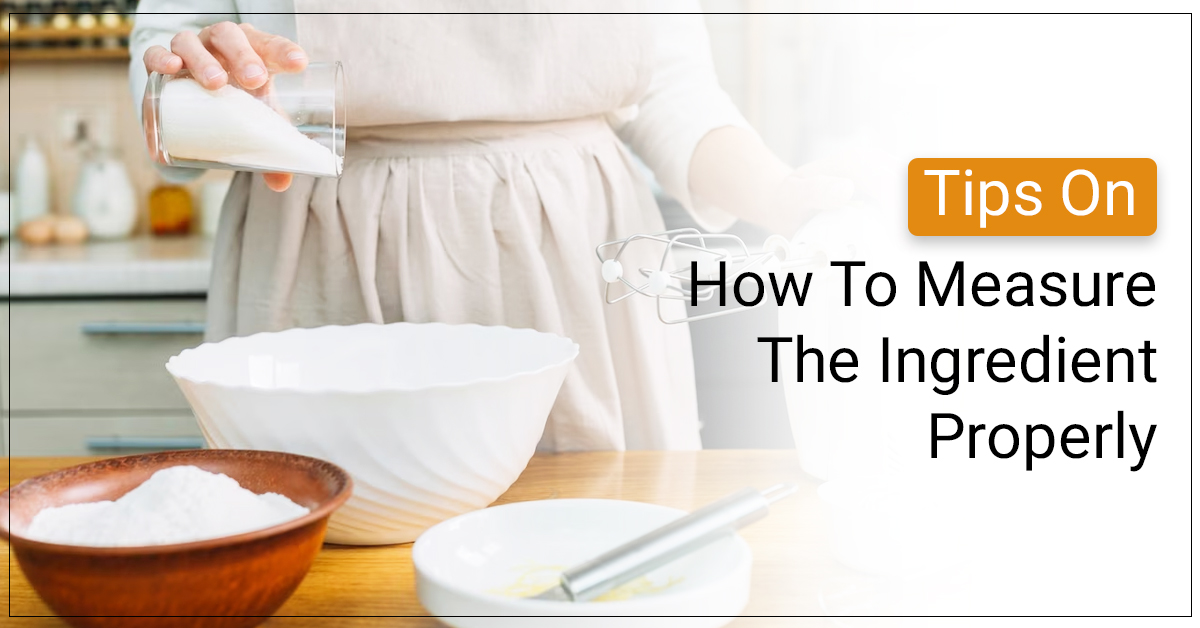Baking from scratch can be easy, and you can make baking fun with the right resources and tools. In baking classes in Chennai, we’re emphasizing a seemingly small detail which is paramount in every recipe you bake. Properly measuring ingredients is crucial in baking. Baking is an exact science, i.e., approximating measurements can lead to disastrous outcomes. While cooking dinner allows for a pinch of this or that, even the tiniest miscalculation in baking could transform your soft chocolate chip cookies into inedible rocks. Understanding the correct measuring technique for each ingredient ensures superior baking results. After all, the line between recipe success and failure may hinge on a single mismeasured ingredient.
Achieving baking perfection requires precision, and for that, read the blog to discover the right technique for measuring baking ingredients to ensure your next recipe is a triumph.
Measuring Flour:
Flour, in particular, is always prone to mismeasurement. Regardless of the type—bread, cake, or all-purpose flour—practice the “spoon & level” method. Avoid scooping flour directly from the container or bag using your measuring cup, as this can lead to an overestimation of up to 50%. Instead, gently spoon the flour into the measuring cup. Refrain from packing the flour or tapping the cup, as both actions cause settling. Once the flour is in the cup, use the back of a knife to level off the excess on top.
Baking Powder & Soda:
Baking powder and soda can settle in their containers if used sparingly. To ensure optimal performance, giving them a good shake or stir before use is essential. Using a measuring spoon, gently scoop the desired amount from the container. You can then level it off using a knife or utilize the built-in leveler if available.
In addition, it’s crucial to mind the differences between baking powder and soda. These leavening agents have approximately six months of shelf life but can lose effectiveness after three months. Consider writing the purchase date to know when it’s time for a replacement and to keep track of freshness.
It is to be noted that using fresh and properly measured baking powder and soda is good for achieving the desired results in baking.
Dry Yeast:
Regarding dry yeast, standard packets contain approximately 2 and 1/4 teaspoons of yeast. If your recipe requires a different amount of yeast or if you measure from a jar or container, treat the yeast measurement similarly to how you measure baking powder or soda. Learn more about dry yeast, its type, and its unique characteristics in baking by joining our cake making classes in Chennai.
Granulated Sugar:
When measuring white granulated sugar, the process differs from measuring flour. Instead of spooning the sugar into the measuring cup or spoon, you scoop it until it overflows and then level it off with the back of a knife.
Sugar is more dense than flour, making it less likely to settle in the measuring cup. However, following the recipe’s exact measurements is essential, as sugar crystals play a crucial role in breaking down other ingredients. Moreover, sugar contributes to proper texture, browning, stabilization, and structure in baked products.
Hence, these are proper techniques to get the best results in baking. Join our cake baking classes in Velachery to learn and get an in-depth understanding of baking.


